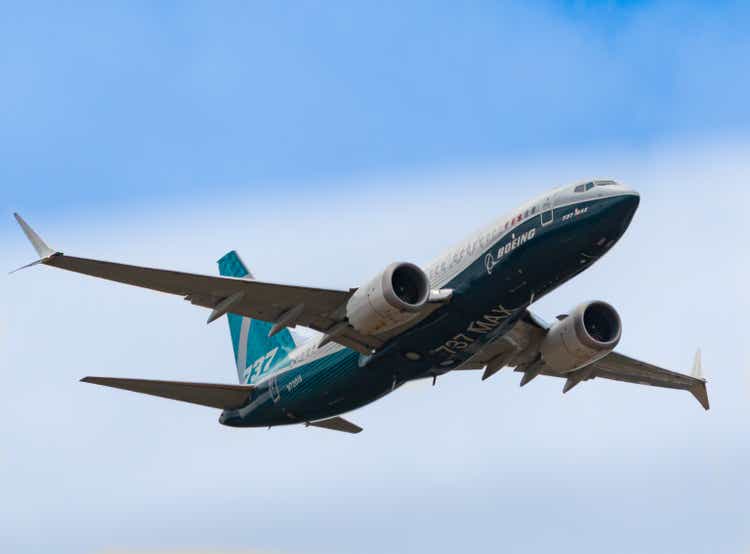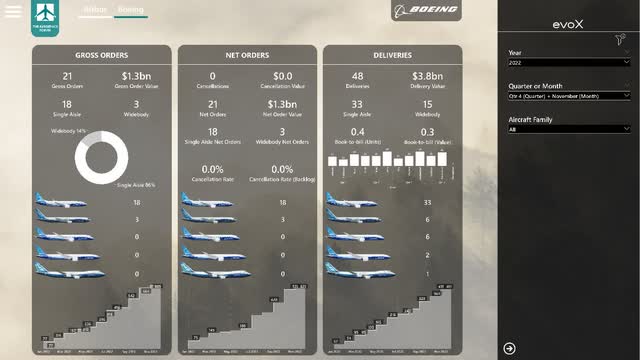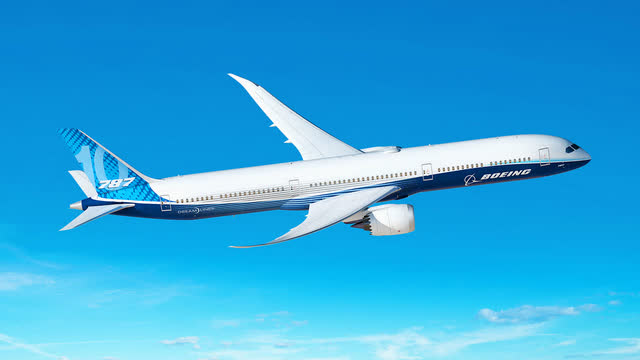Oriaz
The Boeing Company (NYSE:BA) recently announced a major order from United Airlines (UAL). On the same day, the company also announced its order and delivery numbers for November, which as a result did not get a lot of attention. In this report, I will be analyzing the November order and delivery numbers as well as other order book mutations.
For this report, I will be using the evoX order and delivery monitor developed by The Aerospace Forum leveraging the hundreds of thousands of datapoints we got. This ultimately allows us to analyze orders and deliveries and see where manufacturers are falling short, meeting or exceeding expectations.
Boeing Had A Tranquil Order Month
In November, Boeing booked 21 orders valued $1.3 billion consisting of 18 single-aisle jets and 3 wide-body aircraft, marking a sequential decrease of 101 orders:
- Japan ordered two KC-46A tankers, for which the Boeing 767-2C is the base aircraft.
- FedEx Express (FDX) ordered one Boeing 767-300F.
- An unidentified customer ordered 18 Boeing 737 MAX aircraft.
During the month, the following changes were made to the order book:
- Two orders for the Boeing 787-8 were transferred from Boeing Capital Corporation to American Airlines (AAL).
- BBAM Aircraft Management was identified as the customer for one Boeing 737 MAX.
- A/S Maersk Aviation Holdings was identified as the customer for one Boeing 767-300F.
- United Airlines was identified as the customer for two Boeing 787-10s.
November was not a spectacular month for Boeing, selling 3 Boeing 767 aircraft and 18 Boeing 737 MAX aircraft. Boeing logged 21 gross valued $1.3 billion, with no cancellations marked. A year ago, the U.S. jet maker booked 109 orders and 18 cancellations, bringing its net orders to 91 units with a net order value of $4.8 billion. So, we see that net order inflow decreased significantly.
Year-to-date, Boeing booked 685 gross orders and 114 cancellations, bringing the net orders to 571 units with a net order value of $41.4 billion. In the first eleven months of 2021, Boeing booked 829 gross orders and 400 net orders with a net value of $29.5 billion. So, gross orders have trended down year-over-year, but the net order value is more positive, and combined with the improved mix it gives Boeing a year-over-year growth in order value.
Boeing also updated its ASC606 adjustments tally, which is a tally in which Boeing lumps orders that have a purchase agreement but also several other check boxes that need to be ticked in order to count the aircraft orders to the backlog or not. During the month, we saw the tally decrease by one as 3 Boeing 737 MAX aircraft were added to the tally and two Boeing 787 aircraft were removed.
If all ASC 606 adjustments result in cancellations, which definitely is not the case, Boeing would have to scratch an additional 881 aircraft from its books, but as credit ratings for airlines improve the number of aircraft accounted for in the ASC 606 tally might come down without the order being cancelled.
Boeing Deliveries Surge
In November, Boeing delivered 35 jets compared to 51 in the previous month. The jet maker delivered 37 single-aisle jets and 14 wide-body aircraft with a combined value of $3.9 billion:
- A total of 33 Boeing 737s were delivered, consisting of one Boeing P-8A and 32 Boeing 737 MAX aircraft.
- Boeing delivered six Boeing 767 family aircraft consisting of three Boeing 767-2Cs and three Boeing 767-300Fs.
- Boeing delivered two Boeing 777Fs.
- Boeing delivered one Boeing 747-8F.
- Boeing delivered six Boeing 787s; two -8s, two -9s and two -10s.
Boeing deliveries increased by 13 units sequentially driven by higher Boeing 737 MAX deliveries and higher Boeing 767 program deliveries. While the monthly total of 48 deliveries is not the biggest month-over-month change in deliveries, we do note that with 48 deliveries November showed the highest delivery total of any second month of the quarter this year and was only shy three units of the highest monthly total achieved this year, which could indicate that the supply chain environment is slowly stabilizing.
Compared to last year, deliveries increased by fourteen units while the delivery value increased by $1.6 billion, reflecting a more appreciable delivery mix. Year-to-date, Boeing delivered 411 aircraft valued at $28.8 billion compared to 302 aircraft valued at $22.7 billion last year. Year-to-date numbers show that Boeing deliveries are significantly higher, driven by the Boeing 737 MAX program and Boeing 787 program deliveries.
The book-to-bill ratio for the month was 0.4 on unit basis and 0.3 on dollar value basis demonstrating a somewhat weak order month for Boeing. For the first eleven months of the year, the gross book-to-bill is 1.7 in terms of units and 1.7 in terms of value, while the cancellation rate is 17% and 2.3% when measured against the backlog. The book-to-bill ratio for the year is looking extremely strong. This is driven by strong order inflow, but also by the underwhelming delivery numbers due to supply chain issues. So, book-to-bill ratios higher than one do show balance or oversold positions in general, but in this case, they also reflect the big challenges when it comes to hiking production.
Conclusion: Boeing Delivers, So Does Its Stock
November was not an exciting month for Boeing, but that was in no way worrisome. Orders fluctuate from month to month, and overall, when it comes to order inflow, Boeing is tracking better on all key metrics. One minor observation was that United Airlines was disclosed as the customer for two Boeing 787 aircraft, and that does put some question marks behind the order for 100 units, as some aircraft could already be logged, though the working theory at this moment is that this order is completely new, meaning it is not yet reflected in the order book in any way.
More interesting are the delivery numbers. Boeing is delivering aircraft but not yet at the rate that is satisfying. Last month, I noted that I would like to see rates of 31 aircraft per month for the MAX from the production line and another 10 to 15 from the inventory, and that is simply not happening. That remains the case, but overall, we did see improvement in November.
The inventories are unwinding for Boeing’s key programs, and that should help the company in getting a strong liquidity position which reduces its net debt or can even be used to reduce the gross debt. Shares of Boeing have significantly outperformed the market recently, and I believe that as stronger cash flows become more visible there is opportunity for Boeing to deleverage and become more attractive for investment.





Be the first to comment